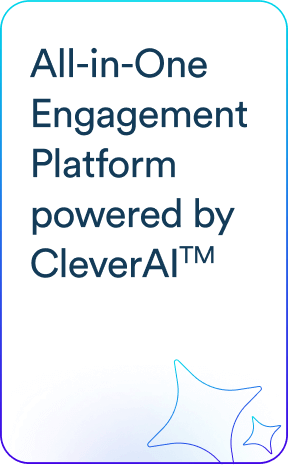This article explores the power of email segmentation, a strategy that allows marketers to create more personalized and effective campaigns. By dividing email lists into smaller, targeted groups based on behavior and interests, businesses can drive higher engagement, conversions, and ROI.
It happens every day—your inbox floods with dozens of emails, most of which you delete without opening. Generic emails don’t make the cut anymore. And your audience feels the same way.
Yet, email remains one of the strongest marketing channels. With over 4.3 billion users worldwide* and an ROI of $36 for every $1 spent*, it’s clear email isn’t going anywhere. So, what sets successful campaigns apart from those that get ignored?
The answer: Relevance.
The goal: deliver value to each segment, recommend products based on past purchases, and reward loyalty with tailored offers. This kind of personalization grabs attention and drives action.
The secret to achieving this? A simple but powerful tool called email segmentation.

What is Email Segmentation?
Email segmentation is the process of dividing your email subscribers into smaller, more targeted groups based on specific criteria. These criteria can range from basic customer demographic information to complex behavioral patterns. The goal is to send each group personalized content that feels relevant and valuable to them, increasing the likelihood of engagement and conversion.
Sending the same email to an entire list may feel easier, but it often leads to missed opportunities. Why? Because people aren’t all the same. A customer who just bought a product might want to see complementary recommendations, while someone who hasn’t engaged in months needs a nudge with a re-engagement campaign. Email list segmentation allows you to deliver a message that feels personal, no matter where the recipient is in their journey.

Read our blog on 9 Effective Strategies for Personalized Email Marketing
Why Segmenting Email Lists is Essential for Success
Email segmentation is a powerful tool that can elevate the success of your campaigns. Here’s why segmenting email lists makes a world of difference:
1. Higher Engagement Rates
Segmentation directly improves open and click-through rates. Segmented email campaigns have 14.32% higher open rates than non-segmented ones, meaning more eyes on your emails and more engagement with your content.
2. Better Conversions
When emails are tailored to subscriber preferences, the likelihood of action increases. Research from the Data & Marketing Association (DMA) shows that segmented campaigns can lead to a 760% increase in revenue, turning personalized messaging into a powerful driver of sales.
3. Fewer Unsubscribes
Irrelevant content often leads to higher unsubscribe rates. Email list segmentation ensures subscribers receive emails aligned with their interests, reducing churn rate and keeping your audience engaged.
4. Stronger Customer Relationships
Segmentation helps you build lasting connections. By sending the right message at the right time, you nurture customer loyalty. 80% of consumers are more likely to make purchases from brands that personalize their communication.
5. Higher ROI
Precision targeting leads to better results with less effort. Every email sent to a specific segment has a higher chance of success, resulting in a significant increase in email marketing ROI.
Email segmentation ensures each email resonates, driving higher engagement, conversions, and overall marketing success.
12 Email Segmentation Strategies Every Marketer Should Know
Below are 12 detailed strategies to help you elevate your email segmentation strategy. Drawing on insights from various industry experts and blogs, these practices will enable you to tailor your messages more effectively, increase engagement, and ultimately drive better results.
1. Segment Based on Real-Time App Behavior
Monitoring real-time app behavior allows businesses to understand user interactions as they happen, enabling the delivery of timely and relevant content. This approach ensures that communications are personalized, enhancing user experience and fostering loyalty.
How to Implement
- Identify Key App Actions: Determine critical user behaviors within your app, such as completing a purchase, viewing specific content, or abandoning a cart.
- Set Up Behavioral Triggers: Utilize analytics tools to establish triggers that activate when users perform these actions. For example, if a user abandons a cart, a trigger can initiate a reminder email.
- Craft Personalized Content: Develop email content that directly addresses the user’s recent activity, offering assistance, recommendations, or incentives related to their actions.
2. Use AI-Driven Predictive Segmentation
AI-driven predictive segmentation leverages machine learning to analyze user data and forecast future behaviors. This proactive approach allows marketers to anticipate user needs and tailor communications accordingly, leading to improved engagement and retention.
How to Implement
- Integrate AI Tools: Adopt platforms like CleverTap that offer AI capabilities to analyze customer data, such as browsing patterns, purchase history, and engagement metrics.
- Develop Predictive Models: Use your email segmentation tool to create models that forecast behaviors like likelihood to purchase, potential churn, or interest in specific products.
- Automate Targeted Campaigns: Based on the insights from predictive models, set up automated email campaigns that address anticipated user needs, such as special offers for high-intent buyers or re-engagement content for at-risk users.
3. Leverage RFM (Recency, Frequency, Monetary) Segmentation
RFM segmentation evaluates customers based on their purchasing behaviors—how recently and frequently they buy, and how much they spend. This method helps identify high-value customers and tailor marketing efforts to different segments, optimizing resource allocation and maximizing returns.
How to Implement
- Analyze Customer Data: Assess each customer’s purchase history to determine:
- Recency: Time since the last purchase.
- Frequency: Number of purchases in a given period.
- Monetary Value: Total expenditure.
- Assign RFM Scores: Based on the analysis, assign RFM scores to customers for each dimension.
- Create Customer Segments: Group customers based on their RFM scores into categories such as “Champions,” “Loyal Customers,” and “At-Risk Customers.”
- Tailor Marketing Strategies: Develop specific email campaigns for each segment. For example, offer exclusive previews to “Champions” and special incentives to re-engage “At-Risk Customers.”
For instance, a fast-food chain, Shawarmer, utilized CleverTap’s RFM analysis tool to segment its customer base effectively. By identifying high-value customers and those at risk of churning, Shawarmer tailored its marketing strategies accordingly, leading to increased sales and improved customer retention.
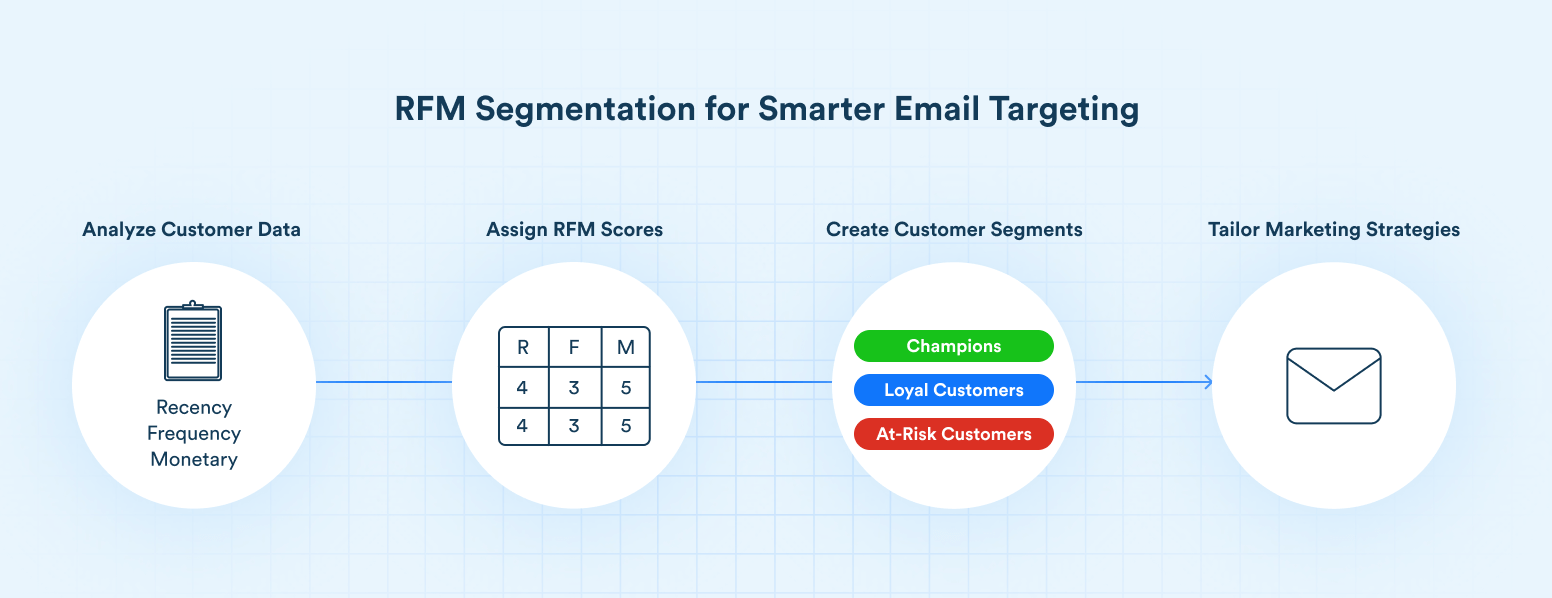
Read the full case study here.
4. Trigger Emails Based on App Uninstall Events
Understanding why users uninstall your app provides valuable insights into potential areas of improvement. Proactively addressing these issues through targeted email campaigns can encourage users to reinstall and re-engage with your app.
How to Implement
- Monitor Uninstall Events: Utilize analytics tools to detect when a user uninstalls your app.
- Collect Feedback: Prompt users to share their reasons for uninstalling, either through in-app prompts before uninstallation or follow-up emails.
- Send Personalized Re-Engagement Emails: Based on the feedback, craft emails that address specific concerns, highlight new features, or offer incentives to return.
For example, let’s say a mobile gaming company notices a high uninstall rate after users complete all available levels. By tracking uninstall events, they can identify this pattern and send targeted emails to these users. They can announce new levels and features added to the game. This personalized approach can lead to a significant number of users reinstalling the app to experience the new content.
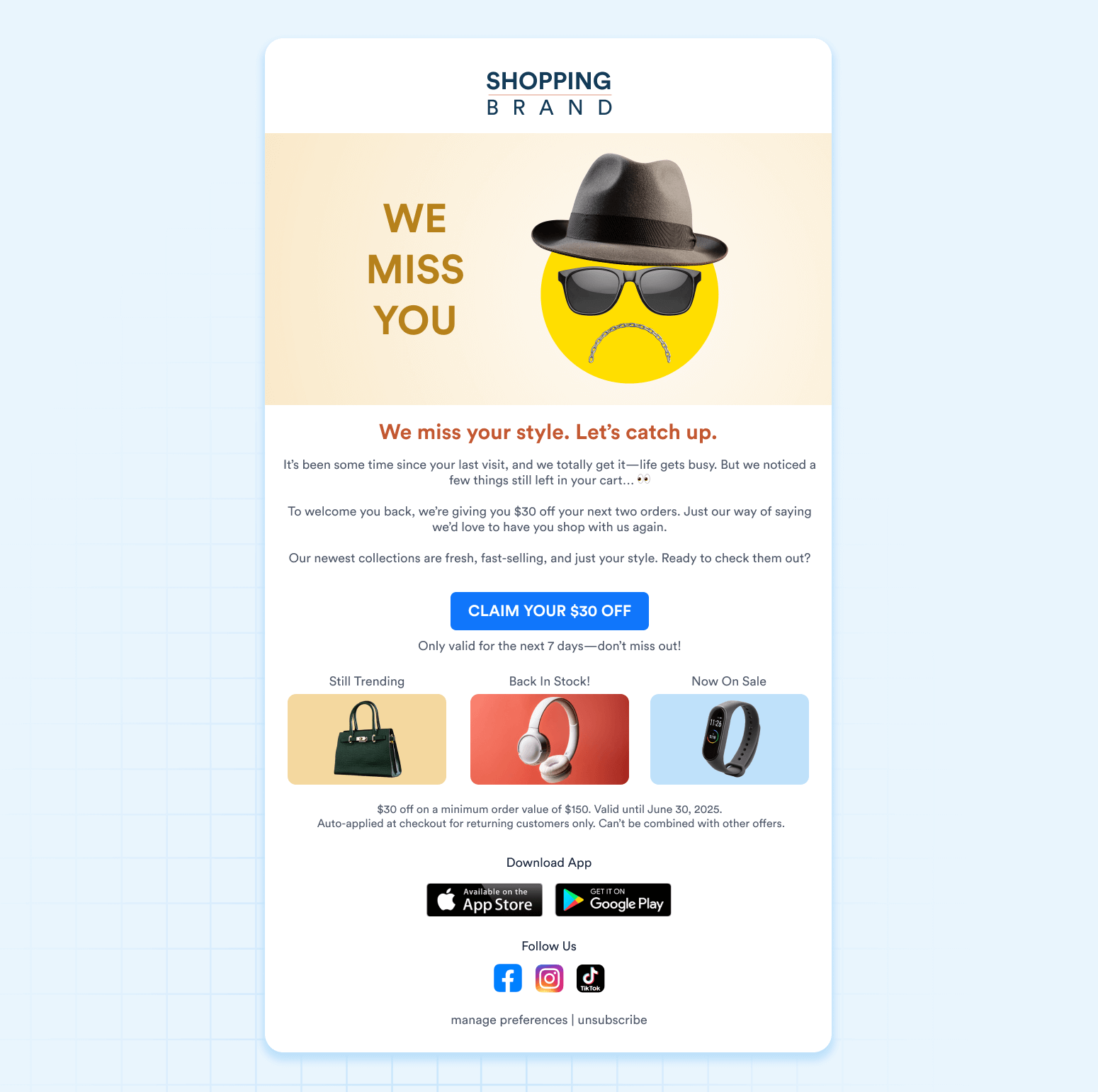
5. Segment Based on Payment Failures & Subscription Expiry
Payment failures and approaching subscription expirations are critical touchpoints that, if not addressed promptly, can lead to involuntary churn. Proactive communication during these events can help retain customers and maintain steady revenue streams.
How to Implement
- Monitor Payment Transactions: Set up systems to detect failed payments or upcoming subscription expirations.
- Segment Affected Users: Through email segmentation, create segments for users experiencing payment issues or those nearing the end of their subscription period.
- Automate Personalized Outreach: Develop email campaigns that notify users of payment failures with easy-to-follow instructions to update their information, or remind them of upcoming expirations with incentives to renew.
6. Use Micro-Segmentation for Personalized Content
Micro-segmentation involves dividing your audience into highly specific groups based on detailed criteria. This strategy enables the delivery of hyper-personalized content, increasing relevance and engagement for each user.
How to Implement
- Collect Detailed User Data: Gather information on user behavior, preferences, demographics, and past interactions.
- Create Specific Segments: Utilize this data to form narrowly defined groups, such as users who prefer a particular product category or those who engage at specific times.
- Develop Tailored Content: Craft email content that speaks directly to the interests and needs of each micro-segment, enhancing the likelihood of engagement.
7. Optimize Engagement With Preferred Time-of-Day Segmentation
Sending emails at times when recipients are most likely to engage can dramatically improve email open rates and click-through rates. Understanding individual user behavior allows businesses to tailor email delivery to align with each subscriber’s optimal engagement window.
How to Implement
- Analyze Engagement Data: Examine historical data to identify when each user typically opens emails or interacts with your content.
- Segment Users by Behavior: With email segmentation group users based on their preferred engagement times, such as morning, afternoon, or evening.
- Schedule Accordingly: Utilize email marketing platforms like CleverTap to send messages at the optimal time for each segment, ensuring content reaches users when they’re most receptive.
8. Segment Based on Customer Support Interaction
Users who frequently contact customer support may have unique needs or face challenges that, if addressed proactively, can enhance their experience and reduce churn. Segmenting these users allows for targeted communication that acknowledges their concerns and offers tailored solutions.
How to Implement
- Monitor Support Tickets: Track the frequency and nature of customer support interactions to identify users who may require additional attention.
- Create Support-Based Segments: Group users based on their support history, such as frequent inquirers, specific issue reporters, or those requiring follow-up.
- Provide Targeted Assistance: Develop email campaigns that address common concerns, offer solutions, or provide resources tailored to each segment’s needs.
9. Target High-Spending Users With Upsell Campaigns
High-value customers and power users who consistently spend more are prime candidates for upselling opportunities. By recognizing and targeting these users with premium offers or exclusive products, businesses can increase revenue and deepen customer loyalty.
How to Implement
- Identify Top Spenders: Analyze purchase histories to pinpoint customers with the highest lifetime value or average order size.
- Develop Exclusive Offers: Create premium packages, early access opportunities, or personalized recommendations that align with these customers’ interests and purchasing behavior.
- Personalize Communication: Craft tailored messages that highlight the benefits and exclusivity of the offers, making the customer feel valued and appreciated.

10. Segment Users for Seasonal or Time-Sensitive Campaigns
Timing is crucial in marketing. By segmenting users based on seasonal behaviors or time-sensitive needs, businesses can deliver relevant content that resonates with customers’ current interests, leading to increased engagement and sales.
How to Implement
- Analyze Seasonal Trends: Review historical data to identify patterns in customer behavior during different seasons or events.
- Create Time-Based Segments: Group users who exhibit specific behaviors or preferences during certain times of the year.
- Develop Targeted Campaigns: Craft personalized emails that align with the identified seasonal interests or time-sensitive needs of each segment.
11. Implement Referral Program Segmentation
Referral programs can amplify your customer base by leveraging existing satisfied customers. Segmenting users based on their referral activity allows businesses to tailor communications, encouraging more referrals and rewarding loyal advocates.
How to Implement
- Identify Active Referrers: Track customers who frequently refer new users to your platform.
- Segment Based on Referral Activity: Create groups such as “High Referrers,” “Moderate Referrers,” and “Non-Referrers.”
- Customize Incentives: Offer tailored rewards and recognition to each segment to motivate continued referral activity.
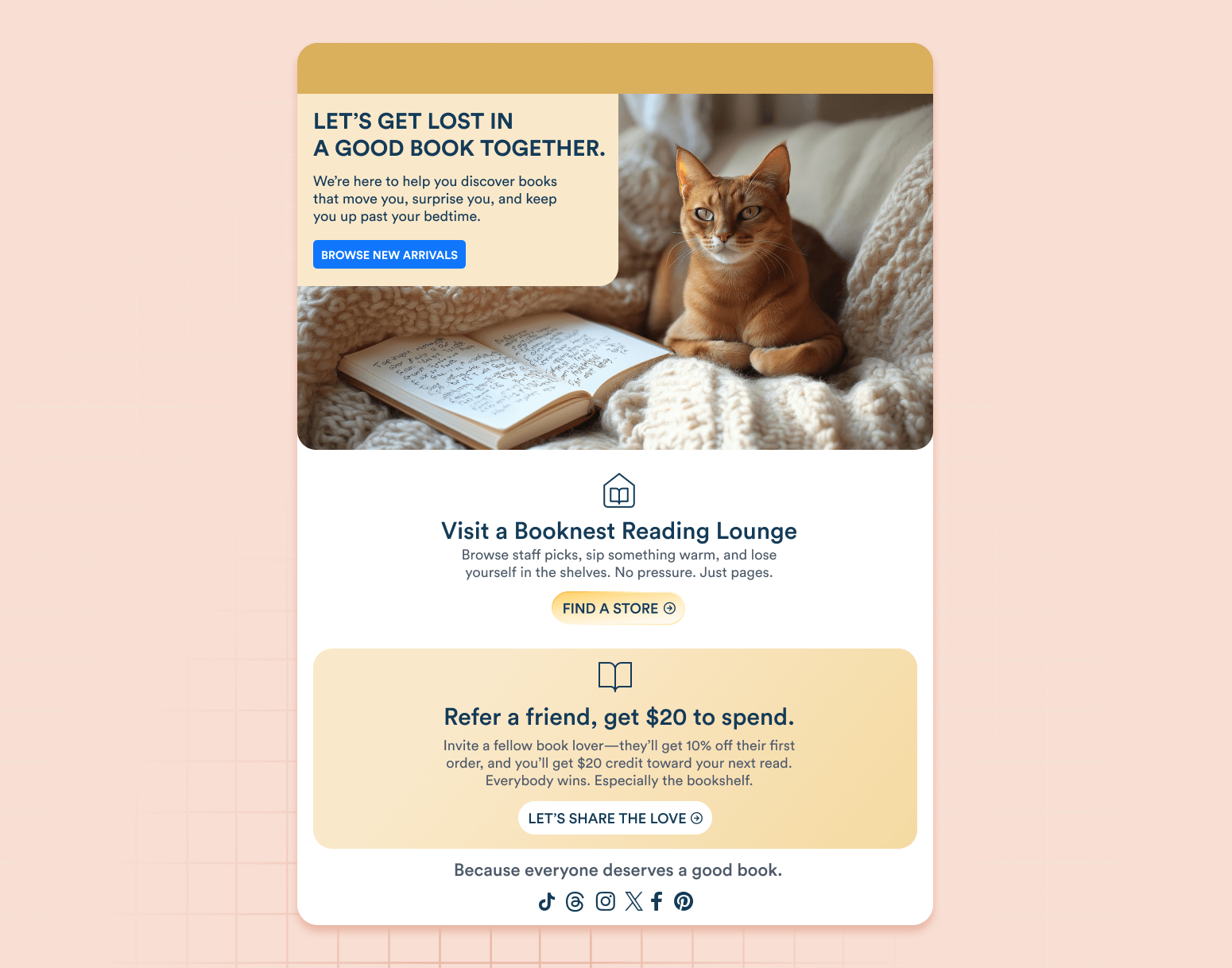
12. Encourage Feature Adoption Through Behavioral Segmentation
Understanding how users interact with your product enables you to promote features that enhance their experience. Use email segmentation to segment users based on their engagement levels, allowing for targeted communication that encourages the adoption of underutilized features.
How to Implement
- Monitor User Engagement: Analyze which features users frequently use and which ones are overlooked.
- Create Engagement-Based Segments: Group users into categories such as “High Engagement,” “Moderate Engagement,” and “Low Engagement.”
Develop Educational Campaigns: Send targeted emails with tutorials, benefits, and use cases of specific features to appropriate segments.
Effective Ways to Segment Your Email Lists
Email marketing segmentation offers endless possibilities, depending on the data available and the goals of your campaign. By using different segmentation methods, you can ensure that your audience receives content that is highly relevant to them. Here are some of the most effective ways to segment your email lists:
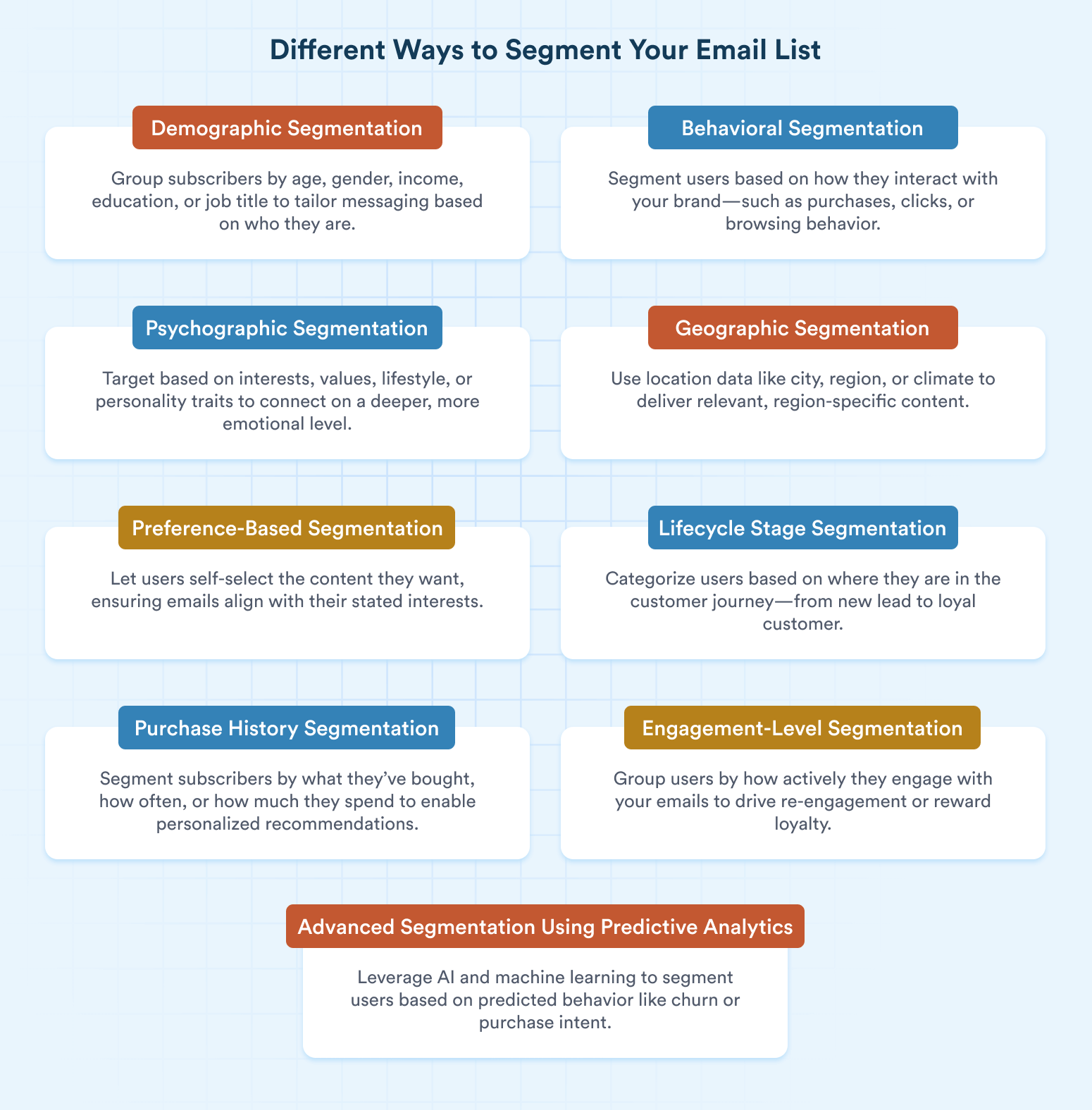
Demographic Segmentation
- What it is: Demographic segmentation is one of the simplest ways to segment your list based on factors such as age, gender, income, education level, and job title.
- Why it works: Different demographic groups often have distinct preferences, needs, and buying behaviors.
- Example: A skincare brand might email anti-aging product recommendations to high-income, older female subscribers, while sending acne treatment tips and student discount offers to younger, college-age subscribers.
Behavioral Segmentation
- What it is: Behavioral segmentation divides users based on their interactions with your brand—this could include past purchases, product views, time spent on the site, or email engagement (opens, clicks).
- Why it works: It allows you to send highly targeted messages based on real-time actions, increasing the relevance of your emails.
- Example: An e-commerce brand can send cart abandonment emails to those who’ve added items to their cart but haven’t completed the purchase.
Psychographic Segmentation
- What it is: Psychographic segmentation method groups users based on interests, lifestyle, values, and personality traits.
- Why it works: Psychographic email segmentation goes beyond basic demographics to consider the emotional and psychological factors that drive decisions.
- Example: A travel company can create segments based on traveler types—adventurous explorers versus luxury vacationers—sending content that resonates with each group’s interests.
Geographic Segmentation
- What it is: Geographic segmentation targets users based on their location, such as country, city, climate, or even local culture.
- Why it works: Location-based targeting is ideal for sending region-specific content. This can be especially effective for brands hosting local events or promoting seasonal products that vary by location.
- Example: A retailer could send weather-appropriate clothing suggestions—coats for customers in colder climates, and swimwear for those in warmer regions.
Advanced Segmentation Using Predictive Analytics
- What it is: Advanced or predictive segmentation leverages machine learning and predictive analytics to forecast customer behavior, such as churn risk, likelihood to purchase, or product recommendations.
- Why it works: This method allows businesses to be proactive rather than reactive, sending personalized messages based on future predictions rather than past actions.
- Example: Using tools like CleverTap for advanced segmentation, brands can identify users at risk of churning and send re-engagement campaigns before the customer loses interest.
Lifecycle Stage Segmentation
- What it is: This type of segmentation groups subscribers based on their stage in the customer journey, from new leads to loyal customers.
- Why it works: It allows you to tailor your messaging to match the specific needs and interests of customers at different stages of their relationship with your brand.
- Example: Send welcome emails to new subscribers, product recommendations to active customers, and re-engagement campaigns to lapsed users.
Purchase History Segmentation
- What it is: Segmenting based on past purchases, including products bought, frequency of purchases, and average order value.
- Why it works: It enables highly personalized product recommendations and targeted upsell or cross-sell opportunities.
- Example: A beauty retailer could send replenishment reminders for skincare products or suggest complementary items based on previous purchases.
Engagement-Level Segmentation
- What it is: Grouping subscribers based on their level of engagement with your emails, such as open rates, click-through rates, and overall activity.
- Why it works: It helps you identify your most engaged subscribers for special offers and re-engage less active ones with targeted campaigns.
- Example: Send exclusive content or early access to sales for your most engaged subscribers, while creating re-engagement campaigns for those who haven’t opened emails in a while.
Preference-Based Segmentation
- What it is: Segmenting based on subscriber preferences, which can be collected through sign-up forms, preference centers, or surveys.
- Why it works: It ensures subscribers receive content they’re explicitly interested in, increasing engagement and satisfaction.
- Example: A news website could allow subscribers to choose their preferred topics (e.g., politics, sports, technology) and send tailored content accordingly.
By utilizing these customer segmentation strategies, you can send more relevant emails that resonate with your audience, boosting engagement and conversions. Whether you’re using simple demographics or advanced predictive analytics, the key is to align your segments with your marketing goals and the specific needs of your subscribers.
Read our expert guide to find the Best Customer Segmentation Tools for your business.
How CleverTap Enhances Email Segmentation
CleverTap is an email marketing platform built to help teams drive stronger results through precise audience targeting and real-time personalization. Its advanced segmentation tools let you define audiences based on behavior, preferences, and lifecycle stage, so every email reaches the right person at the right time.
From triggered sends to dynamic content at scale, CleverTap helps you deliver high-performing campaigns that adapt as your users do.
Here’s how CleverTap helps businesses optimize their email segmentation strategy:
Advanced Segmentation Capabilities
CleverTap lets you create precise audience segments using user attributes, in-app behaviors, custom events, and psychographic data. You can apply complex nested AND/OR logic to build multi-dimensional segments that align perfectly with your campaign goals.
Real-Time Dynamic Segmentation
CleverTap updates audience segments the moment user data changes. Whether a user makes a purchase, becomes inactive, or engages with a campaign, the platform refreshes segments in real time, ensuring you never miss an opportunity to engage meaningfully.
Predictive AI-Powered Segmentation
Using Clever.AI’s Intent-Based Segmentation and RFM models, you can segment users based on their likelihood to convert, churn, or re-engage. This enables you to proactively engage high-value users with targeted incentives or reactivation campaigns.
Personalized Email Experiences
You can personalize email content based on user actions, preferences, and real-time data. CleverTap’s flexible email editor supports HTML, AMP, and drag-and-drop design, allowing you to build engaging, dynamic emails without needing extensive technical skills.
Automated Lifecycle Campaigns
You can set up automated campaigns that trigger based on user behavior or lifecycle stage. From onboarding emails to cart abandonment to win-back campaigns, CleverTap ensures your emails go out at the right time to drive engagement.
A/B Testing and Multivariate Optimization
CleverTap lets you experiment with subject lines, content blocks, layouts, and send times. With IntelliNODE, the platform automatically identifies and promotes the best-performing journeys to maximize conversions in real time.
Comprehensive User Profiles
Powered by TesseractDB™, CleverTap unifies all user data, capturing up to 10,000 data points per user per month with a 10-year lookback. This allows you to segment with unmatched granularity and personalize emails with rich context.
Advanced Analytics and Reporting
You can track open rates, CTRs, bounce rates, and conversions with real-time dashboards. CleverTap also provides spam diagnostics, inbox previews, UTM tracking, and ROI attribution to help you continuously optimize performance.
ESP Flexibility and Quick Onboarding
CleverTap gives you the option to use its managed ESP or integrate your own. The platform supports domain authentication, dedicated IPs, IP warm-up plans, and provides expert-led onboarding to get you up and running fast.By leveraging CleverTap’s powerful segmentation features, businesses can create data-driven email marketing strategies that enhance customer engagement, drive higher conversions, and deliver a more personalized customer experience.
Maximize email ROI with CleverTap’s AI-powered segmentation
Future Trends in Email Segmentation
Email segmentation continues to be one of the most effective tactics for improving engagement, conversions, and customer retention. Marketers who use segmentation report higher open and click-through rates, as well as better overall campaign performance. As technologies advance, the practice of segmentation is becoming more sophisticated, allowing marketers to move from basic demographic filters to real-time, behavior-based targeting.
Here are the key trends driving this shift:
- AI-powered hyper-personalization uses machine learning to predict user preferences and deliver tailored content
- Real-time contextual segmentation adapts emails instantly based on factors like location, device type, or time of day
- Cross-channel integration aligns email segmentation with other touchpoints such as mobile apps, web, and in-app messaging
- Predictive analytics identifies likely future actions, allowing marketers to send emails based on anticipated behavior
- Voice and IoT integration introduces new segmentation inputs as consumers interact through smart devices
- Enhanced privacy and transparency reflect growing regulatory requirements and user expectations for ethical data use
- Emotional intelligence in segmentation incorporates sentiment analysis to align content with user mood
To maximize performance, marketers need to test segments continuously, track key metrics, and adjust strategies based on results. Using advanced tools and analytics, teams can build more accurate segments, respond faster to changes in behavior, and coordinate messaging across multiple channels. These innovations are helping brands increase the precision and impact of their email campaigns.
Ready to optimize your email marketing with smarter email segmentation? Discover how CleverTap can help you automate, personalize, and scale your email campaigns for better results. Explore CleverTap’s email solutions here.
Agnishwar Banerjee 
Leads content and digital marketing.Expert in SaaS sales, marketing and GTM strategies.
Free Customer Engagement Guides
Join our newsletter for actionable tips and proven strategies to grow your business and engage your customers.

